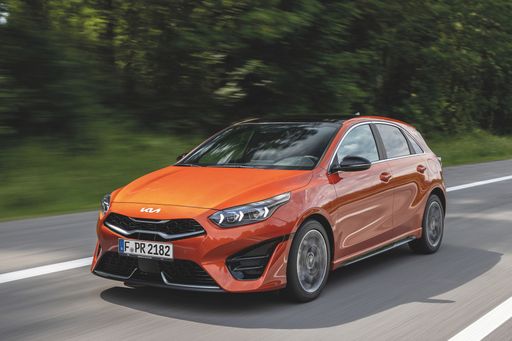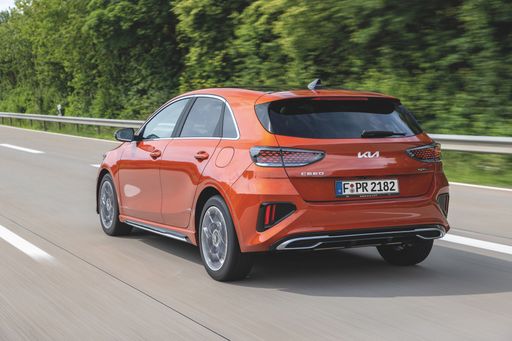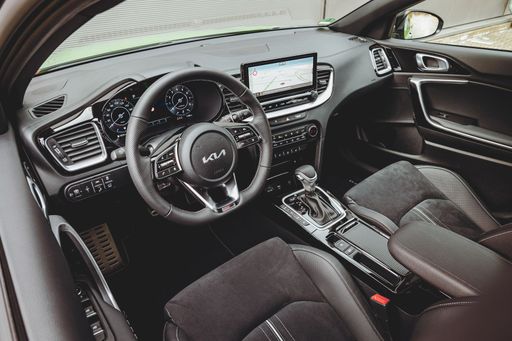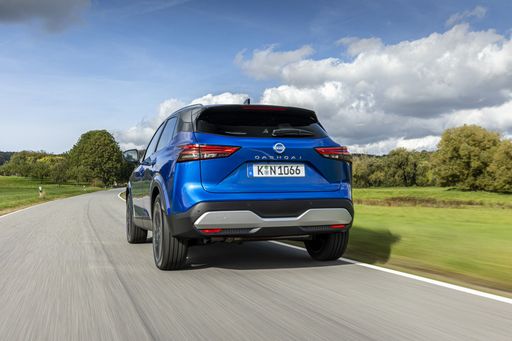Kia Ceed vs Nissan Qashqai - Differences and prices compared
Compare performance (140 HP vs 205 HP), boot space and price (23500 £ vs 29600 £) at a glance. Find out which car is the better choice for you – Kia Ceed or Nissan Qashqai?
Costs and Efficiency:
Price and efficiency are often the first things buyers look at. Here it becomes clear which model has the long-term edge – whether at the pump, the plug, or in purchase price.
Kia Ceed has a distinct advantage in terms of price – it starts at 23500 £, while the Nissan Qashqai costs 29600 £. That’s a price difference of around 6128 £.
Fuel consumption also shows a difference: Nissan Qashqai manages with 4.50 L and is therefore clearly perceptible more efficient than the Kia Ceed with 6 L. The difference is about 1.50 L per 100 km.
Engine and Performance:
Power, torque and acceleration are the classic benchmarks for car enthusiasts – and here, some clear differences start to show.
When it comes to engine power, the Nissan Qashqai has a evident edge – offering 205 HP compared to 140 HP. That’s roughly 65 HP more horsepower.
In acceleration from 0 to 100 km/h, the Nissan Qashqai is evident quicker – completing the sprint in 7.60 s, while the Kia Ceed takes 9.50 s. That’s about 1.90 s faster.
In terms of top speed, the Nissan Qashqai performs minimal better – reaching 206 km/h, while the Kia Ceed tops out at 197 km/h. The difference is around 9 km/h.
There’s also a difference in torque: Nissan Qashqai pulls noticeable stronger with 330 Nm compared to 253 Nm. That’s about 77 Nm difference.
Space and Everyday Use:
Cabin size, boot volume and payload all play a role in everyday practicality. Here, comfort and flexibility make the difference.
Both vehicles offer seating for 5 people.
In curb weight, Kia Ceed is barely noticeable lighter – 1298 kg compared to 1420 kg. The difference is around 122 kg.
In terms of boot space, the Nissan Qashqai offers noticeable more room – 504 L compared to 395 L. That’s a difference of about 109 L.
In maximum load capacity, the Nissan Qashqai performs to a small extent better – up to 1447 L, which is about 156 L more than the Kia Ceed.
When it comes to payload, Nissan Qashqai barely noticeable takes the win – 520 kg compared to 490 kg. That’s a difference of about 30 kg.
Who comes out on top?
Overall, the Nissan Qashqai shows itself to be leaves the rival little chance and secures the title of DriveDuel Champion.
It convinces with the more balanced overall package and proves to be the more versatile choice for everyday use.

Nissan Qashqai
Costs and Consumption
View detailed analysis
Engine and Performance
View detailed analysis
Dimensions and Body
View detailed analysis
Kia Ceed
The Kia Ceed is a sensible, stylish hatchback that gives buyers more than they'd expect for the money, blending practical space with crisp, modern looks. It drives with measured confidence and comes loaded with user-friendly kit, so you can enjoy daily life behind the wheel without breaking into a sweat.
details


Nissan Qashqai
The Nissan Qashqai blends practical, family-friendly packaging with SUV styling that refuses to shout, making it a sensible and dependable choice for everyday life. It’s comfortable to live with, economical on the road, and neatly equipped enough to feel modern without ever feeling precious — perfect if you want crossover versatility without the drama.
details





|

|
|
|
|
Costs and Consumption |
|
|---|---|
|
Price
23500 - 26300 £
|
Price
29600 - 39900 £
|
|
Consumption L/100km
6 - 6.4 L
|
Consumption L/100km
4.5 - 6.8 L
|
|
Consumption kWh/100km
-
|
Consumption kWh/100km
-
|
|
Electric Range
-
|
Electric Range
-
|
|
Battery Capacity
-
|
Battery Capacity
-
|
|
co2
137 - 146 g/km
|
co2
102 - 154 g/km
|
|
Fuel tank capacity
50 L
|
Fuel tank capacity
55 L
|
Dimensions and Body |
|
|---|---|
|
Body Type
Hatchback
|
Body Type
SUV
|
|
Seats
5
|
Seats
5
|
|
Doors
5
|
Doors
5
|
|
Curb weight
1298 - 1372 kg
|
Curb weight
1420 - 1665 kg
|
|
Trunk capacity
357 - 395 L
|
Trunk capacity
479 - 504 L
|
|
Length
4315 mm
|
Length
4425 mm
|
|
Width
1800 mm
|
Width
1835 mm
|
|
Height
1447 mm
|
Height
1625 mm
|
|
Max trunk capacity
1253 - 1291 L
|
Max trunk capacity
1422 - 1447 L
|
|
Payload
478 - 490 kg
|
Payload
466 - 520 kg
|
Engine and Performance |
|
|---|---|
|
Engine Type
Petrol, Petrol MHEV
|
Engine Type
Petrol MHEV, Full Hybrid
|
|
Transmission
Manuel, Automatic
|
Transmission
Manuel, Automatic
|
|
Transmission Detail
Manual Gearbox, Dual-Clutch Automatic
|
Transmission Detail
Manual Gearbox, CVT, Reduction Gearbox
|
|
Drive Type
Front-Wheel Drive
|
Drive Type
Front-Wheel Drive, All-Wheel Drive
|
|
Power HP
100 - 140 HP
|
Power HP
140 - 205 HP
|
|
Acceleration 0-100km/h
9.5 - 13.2 s
|
Acceleration 0-100km/h
7.6 - 10.2 s
|
|
Max Speed
178 - 197 km/h
|
Max Speed
170 - 206 km/h
|
|
Torque
172 - 253 Nm
|
Torque
240 - 330 Nm
|
|
Number of Cylinders
3 - 4
|
Number of Cylinders
3 - 4
|
|
Power kW
74 - 103 kW
|
Power kW
103 - 151 kW
|
|
Engine capacity
998 - 1482 cm3
|
Engine capacity
1332 - 1498 cm3
|
General |
|
|---|---|
|
Model Year
2024
|
Model Year
2025
|
|
CO2 Efficiency Class
E
|
CO2 Efficiency Class
E, C
|
|
Brand
Kia
|
Brand
Nissan
|
What drivetrain options does the Kia Ceed have?
The Kia Ceed is available as Front-Wheel Drive.
The prices and data displayed are estimates based on German list prices and may vary by country. This information is not legally binding.
